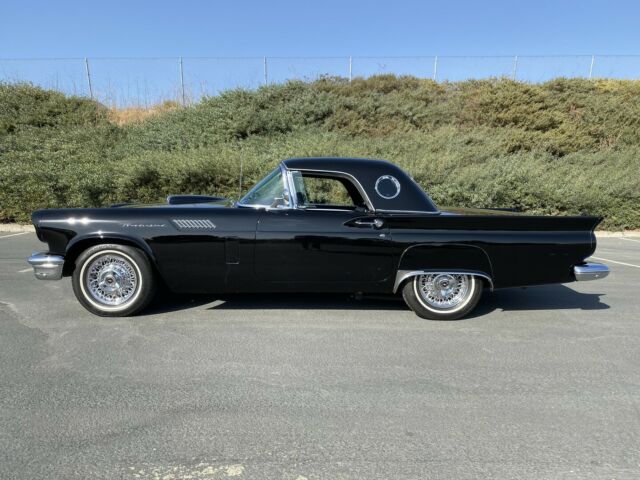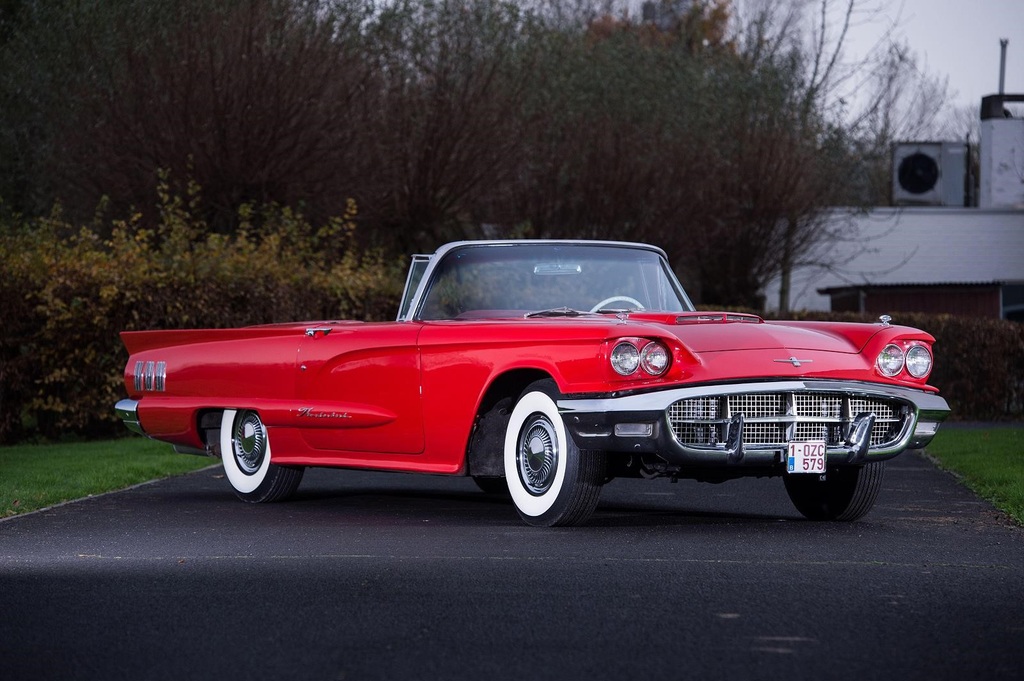

Sales of the second-generation Thunderbird were placed for September of 1957, but due to delays, sales were pushed back to December 20th. Stopping power was provided by drum brakes at the front and rear. The rear suspension, which was designed to accommodate the air springs, was later replaced by leaf springs in 1959.

Ford had planned to offered air springs for the rear, but this never made it into production. In the back was a live axle with trailing arms and coil springs. The suspension setup was conventional with the front being independent, with coil springs and unequal-length A-arms.
1958 ford thunderbird black manual#
It was backed by a three-speed manual transmission, with overdrive or Cruise-O-Matic three-speed automatic transmission optional. The engine offered 300 horsepower at 4,600 RPM making it one of the most potent production engines of its era. Power was sourced from Ford's new 352 cubic-inch FE-series V8 engine with a cast-iron block, overhead valves, a 10.2:1 compression ratio, and a Holley four-barrel carburetor. The console housed minor controls, switches, and ashtrays. Due to its lower stance, it received a higher drivetrain tunnel that was incorporated into a center console dividing front and rear seats. It stood 52.5-inches tall and its ground clearance measured 5.8-inches.

To accommodate the rear seats and to provide maximum interior space, the '2nd Gen' Thunderbird used modern unibody construction with a wheelbase size of 112-inches, an overall length of 205.4 inches, and a width of 77 inches. Following minor revisions, it would later become the 1961 Lincoln Continental. Elwood Engel had also presented a design but it was rejected. The styling of the all-new Thunderbird, known as the 'Square Bird', was attributed primarily to Joe Oros, whose talents were later applied to the 1964 Ford Mustang.

To this end, the Thunderbird gained rear seats. With their fingers on the pulse of change throughout the industry, Ford management and especially Robert McNamara felt the Thunderbird sales could reach new plateaus if it could appeal to families. The amount of available horsepower on production engines began to exceed 300 bhp, with displacement growing to equally impressive sizes, complemented by the use of fuel injection and other modern advancements. Change was a popular theme through the 1950s within the automotive industry, with designs emulating the accomplishments of the space race, with aircraft-inspired interiors, towering tail fins, and plentiful amounts of chrome highlighting and accenting design cues. The first-generation Thunderbird had been very successful, especially when compared to the Corvette, but rather than rest on their laurels, management approved a major redesign for the second generation. Two additional seats were added to the rear and the amenities reserved for full-sized vehicles were bestowed upon the mid-sized Thunderbird. An all-new design was introduced for 1958, pushing the 'personal luxury' theme even further. The first generation of the Thunderbird lasted from 1955 through 1957 with mild updates along the way. The 16,155 units sold during its inaugural 1955 year far exceeded the 700 Corvette sales. When the Ford Thunderbird entered production in the mid-1950s (first introduced in February of 1953, a month after the Corvette), it wore a sporty two-seat convertible body but unlike the Corvette, it was aimed at a new market segment called 'personal luxury.' Using mechanical components from Ford's parts bin, the Thunder rested on a 102-inch wheelbase and standard power was from a 292 cubic-inch Y-block V8 from the Mercury division.


 0 kommentar(er)
0 kommentar(er)
